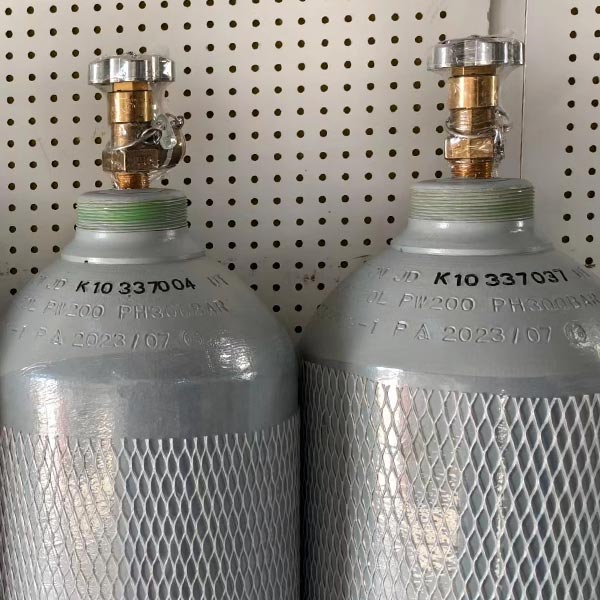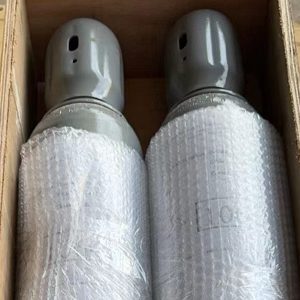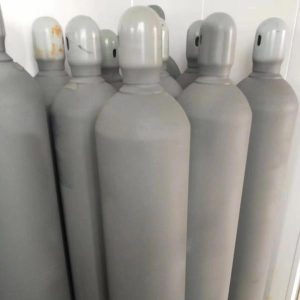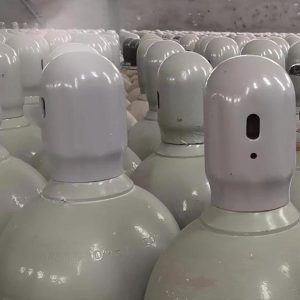Description
Product Name: Carbonyl Sulfide (COS) – Carbonyl Sulfide Gas – COS Gas – COS
CAS :463-58-1
Purity: 99.9% ~ 99.99 %
Product specifications: 4L/8L/10L/40L/47L/50L
Product form: Carbonyl Sulfide (COS) – Carbonyl Sulfide Gas – COS Gas – COS
Main use: Carbonyl Sulfide (COS): Used as an intermediate in organic synthesis.
Availability : In Stock
Certificate of Analysis
| ITEMS | UNIT | SPEC | RESULT |
| Purity | % | ≥ 99.9 | > 99.9 |
| O2 | ppmv | ≤ 100 | < 100 |
| N2 | ppmv | ≤ 100 | < 100 |
| CO2 | ppmv | ≤ 100 | < 100 |
| CS2 | ppmv | ≤ 100 | < 100 |
| H2S | ppmv | ≤ 100 | < 100 |
| H2O | ppmv | ≤ 100 | < 100 |
NOTE : for grade 99.99 % speciifcation, dont hesitate to call or contact us tao.hu@asiaisotope.com
Our Carbonyl sulfide (COS) serve Chemical Synthesis and Fumigant for several years , gaining their trust ranging from its quality / price / delivery. We know how they think when each inquiries, and solve their questions on site.
Applications and Industries – Carbonyl Sulfide Uses
Carbonyl sulfide (COS) is a chemical compound primarily used as an intermediate in the synthesis of other chemicals, particularly thiocarbamate herbicides and other organic sulfur compounds. Carbonyl sulfide (COS) is also found in trace amounts in the atmosphere, and is produced naturally from various sources like volcanoes and wetlands. Additionally, Carbonyl sulfide (COS) is used as a grain fumigant.
1. Chemical Synthesis:
Carbonyl sulfide (COS) acts as a building block in the production of various organic sulfur compounds and alkyl carbonates.
Carbonyl sulfide (COS) is a key intermediate in the synthesis of thiocarbamate herbicides, a type of pesticide.
2. Fumigant:
Carbonyl sulfide (COS) has been studied as a potential alternative to methyl bromide, a fumigant being phased out due to its ozone-depleting properties.
Carbonyl sulfide (COS) has also been investigated as a replacement for phosphine, another fumigant, where insect resistance is a concern.
While not currently approved for commercial use in some regions, research indicates its effectiveness as a grain fumigant.
3. Atmospheric Studies:
Carbonyl sulfide (COS) is the most abundant sulfur-containing gas in the atmosphere.
Carbonyl sulfide (COS) is used as a tracer for photosynthetic activity in plants and for understanding carbon cycling in ecosystems.
Carbonyl sulfide (COS) also plays a role in the formation of stratospheric sulfate aerosols.
4. Other Potential Applications:
Carbonyl sulfide (COS) has been investigated for its potential to deliver hydrogen sulfide, a signaling molecule, in biological systems.
Carbonyl sulfide (COS) has been found to catalyze the formation of peptides from amino acids.







